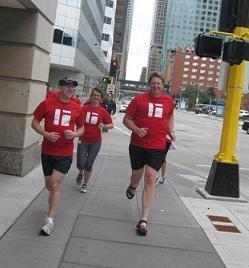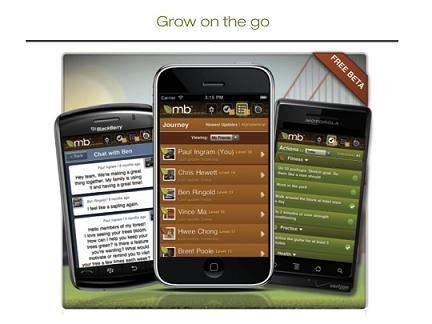
My client recently revealed that he really valued the different perspectives that I bring, from consumers and competitors to companies inside and outside of healthcare. There is so much that we can learn from an “outside- in” perspective.
Last week, I led a panel at the Community 2.0 Strategies Conference and listened to engagement successes from the most innovative consumer driven companies in the World. Just like healthcare organizations, these companies are compelled to capture the mind -share and influence the mind -set of the incredibly busy and often overwhelmed consumer.
6 ½ Secrets For Engagement
As you review these consumer-centric examples, think about the healthcare opportunity that I have outlined under each one. What other ways can these success factors be leveraged to motivate engagement in your company?
1. Peer to Peer Influencers Are Powerful
Microsoft has a vibrant online community of MVPs who are “independent experts” leading discussions and sharing advice with their peers. Microsoft has set up a formal program with processes to identify, reward and transfer knowledge with these Influencers.
Healthcare Opportunity: Imagine ways to leverage the “Patient Expert” to encourage and support others in the community. This Expert knows the topics of interest, understands the issues facing these patients and can speak the patient’s language.
2. Education Builds Relationships
Verizon Residential has created an online community called “Room to Learn” which teaches consumers about the evolving set of technologies that they need in their home and how these technologies play together.
Healthcare Opportunity: With the expansion of the Patient Centered Medical Home, consider how we can educate consumers about technologies that will empower them from tele-health for chronic care management to technologies that support ‘Aging in Place’ for seniors and caregivers. After all, isn’t increasing self-management an important goal of healthcare?
3. From Crowd Sourcing to Friend Sourcing
Trip Advisor shared their move to integrate their site with Facebook and bring consumers travel reviews from their own personal network. Although they are still evolving this capability, Trip Advisor understands the value of trust in the decision making process.
Healthcare Opportunity: When consumers participate in a coaching program, think about the role that their personal network can play in supporting their goals and celebrating their achievements. Although the consumer may interact with their coach a few times during the week, their personal support network is with them all week long.
4. Rewarding the Right Behaviors
Dell, a veteran in the online community space, is working hard to define behaviors that they want to reward. Dell is most interested in recognizing “helpful” behaviors. For example, one community member shares advice with another which results in a positive behavior.
Healthcare Opportunity: As employers look for ways to take their company- wide social challenges to the next level, imagine finding ways to reward team captains and co-workers who contribute to the healthy success of their fellow employees.
5. Employee Engagement Leads to Consumer Engagement
Sega video games has created a “Wall of Awesome” which posts feedback, input and overall inspiration from their customers. As Sega employees continually visit this wall, they are more motivated to participate in the community and spotlight these members in the online community.
Healthcare Opportunity: It takes a company to support a healthcare consumer. With care management so fragmented, employees often do not hear about the ways their co-workers have helped or about the appreciation that some have received. Imagine having an online intranet area where employees share these stories with their colleagues and bring the inspirational stories back into the online community.
6. Content Driven Before Channel Driven Engagement
Over time, Dell has taken a more holistic view of driving online engagement. Their approach entails starting with their content, of which 40% is “user generated”, and then thinking through how the different platforms (e.g. Facebook, Twitter and other public and private Dell communities) can use this information. Dell is most interested in what content is being consumed and how their customers are interacting with their company through these different online touch points.
Healthcare Opportunity: Innovative healthcare organizations enable consumers to set both their channel and content preferences. Instead of continuing to add content providers (which are the same information sources being used by their competitors), these healthcare companies are spending more time evaluating, organizing and highlighting unique content generated by their community members. This “user generated content” delivers a valuable and differentiated experience for the consumer.
6½ Integrated Content and Community for Impact (Extension of # 6)
NBC shared the redesign of their iVillage women’s community where they connected their content, member community and experts to motivate much higher participation. Now in one place, members can now read an article with comments from their community members and experts.
Healthcare Opportunity: Instead of forcing consumers to find content across separate online spaces, leading healthcare companies are starting to connect these content sources to present different perspectives on the health issue from various authorities both personal and professional. As a result, consumers are spending more time exploring the information to support their health decisions.
Although you may not have the budget to fund all of these engagement opportunities, you can learn from the successes of other consumer driven businesses. With this new insight, your company can make better investments in the game of consumer engagement which will result in a win-win.
 Social Health Community,
Social Health Community,  consumer generated health and wellness content,
consumer generated health and wellness content,  educating consumers about health and wellness in
educating consumers about health and wellness in  Behavior Change Health & Wellness,
Behavior Change Health & Wellness,  Consumer Segmentation Health,
Consumer Segmentation Health,  Data Driven Health Engagement,
Data Driven Health Engagement,  Decision Support eHealth,
Decision Support eHealth,  Mobile Engagement Health & Wellness,
Mobile Engagement Health & Wellness,  Patient Engagement,
Patient Engagement,  eHealth Channel Strategy
eHealth Channel Strategy 







